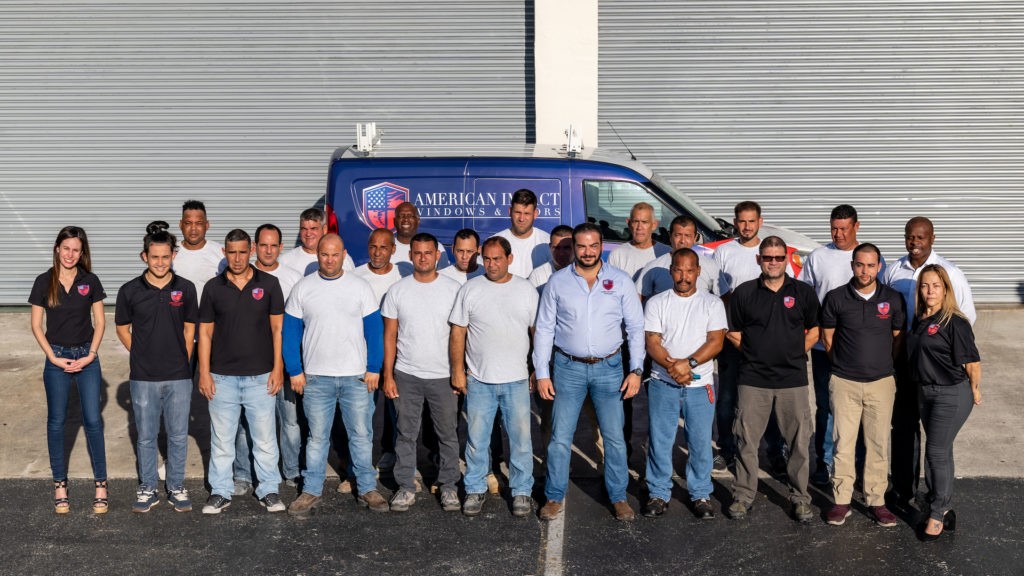When you live in a region that is prone to hurricanes, strong winds, or extreme weather conditions, protecting your home becomes a top priority. Impact Windows The best protection you can get for your home in Florida
Impact windows are designed to resist shattering when struck by high winds or debris, making them an essential feature for homes located in coastal regions.
Made of either tempered or laminated glass, both of which are types of safety glass that make up impact-resistant windows. Tempered glass is treated with heat and chemicals to make it stronger, while laminated glass is made by bonding two or more pieces of glass together with a layer of plastic.
The combination of glass and plastic makes the laminated glass more durable and resistant to shattering.

Retrofitting vs. Full Replacement
When it comes to windows, you have two options – retrofitting or full replacement. Retrofitting involves reinforcing the existing windows with impact-resistant film, while full replacement involves replacing the old windows with new impact windows.
While retrofitting is a more cost-effective solution, full replacement provides better protection against extreme weather conditions.

Benefits
The benefits of impact-resistant windows extend beyond just providing protection against severe weather conditions. Impact windows can also help reduce energy costs by adding an extra layer of weather insulation.
This insulation keeps interior living spaces warmer in the winter and cooler in the summer, which can help lower energy bills.
Additionally, these windows are designed to reduce outside noise, making them an ideal choice for homes located near busy roads or noisy neighborhoods.
Tips for Installing Impact Rated Windows
If you are considering installing impact windows in your home, there are a few things to keep in mind.
- TIP #1 – Make sure to select windows that meet the impact resistance requirements set by your local building code.
- TIP #2 – Hire a professional contractor with experience in installing impact windows to ensure proper installation.
- TIP #3 – Consider the type of impact window that best fits your needs, as well as the potential cost savings in energy bills and homeowner insurance rates.

Types of Impact Windows
When it comes to selecting the right type of impact-resistant window, you have several options to choose from.
Single-hung Windows
Single-hung windows are the most common type of impact window and are often used in residential homes. These windows consist of two panels, with one panel that moves up and down while the other panel remains stationary.
Double-hung Windows
Double-hung windows are similar to single-hung windows but allow both panels to move up and down. Sliding windows are another popular option and consist of two panels that slide past each other. These windows are often used in larger openings, such as patios or sunrooms.
Casement Windows
Casement windows are another type of impact-resistant window that is often used in homes located in areas with high wind loads. These windows are hinged on one side and open outward, providing better ventilation and airflow.
Awning Windows
Awning windows are similar to casement windows but are hinged at the top and open outward. These windows are ideal for areas where protection from rain is necessary, such as bathrooms or kitchens.

Protecting Your Home with Impact Windows in Miami, FL
Impact-resistant windows are a crucial feature for homes located in regions prone to hurricanes, strong winds, or extreme weather conditions. These windows are designed to resist shattering when struck by high winds or debris, making them an essential safety feature for you. Impact windows are made of either tempered glass or laminated glass and come in various types to fit the needs of each homeowner.
Apart from providing protection, impact windows can also help reduce energy costs, reduce outside noise, and add value to your home. Whether retrofitting or replacing old windows, make sure to hire a professional contractor with experience in installing impact windows and select windows that meet the impact resistance requirements set by your local building code. By taking these steps, you can enjoy the peace of mind that comes with knowing your home is well-protected against extreme weather conditions.



